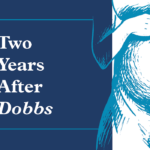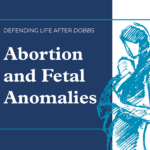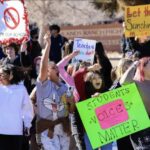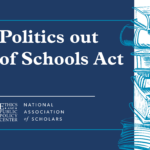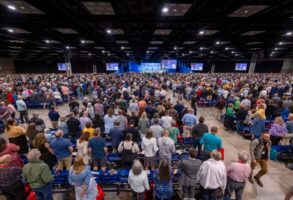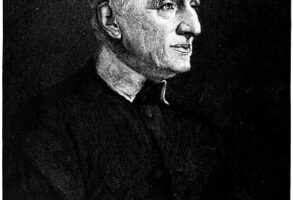
Published May 7, 2024
The spread of high-school walkouts as vehicles of anti-Israel protest alerts us to a problem of national scope. K–12 students have every right to wear T-shirts or armbands in support of political causes. They do not, however, have the right to walk out of class. If students want to march in protest, they should do so on their own time, not during school. Unfortunately, a growing number of school districts allow and even encourage mass student walkouts for political causes. It’s all part of a shift toward “action civics,” the idea that stoking student protest on school time (or after school for credit) is an essential component of civic education.
Student political walkouts as “civics” are a bad idea. Excusing students from school for the sake of protest forces schools to favor some political causes over others. Walkouts also subject a captive audience of minors to political pressures from teachers, peers, and outside groups. And mass walkouts leave students who hold back from popular causes feeling left out or attacked. In the worst case, students become political pawns in adult battles. Under the guise of “civics,” students are manipulated into joining competing political armies.
We can see all this in the recent high-school walkouts over the war in Gaza. Let’s have a look at how these demonstrations played out in three locations: Chicago, New York, and suburban Edina, Minn. It’s important to understand how protests on school time work in blue districts, where they are common and accepted, because the goal of the education-establishment Left is to spread political high school walkouts to every part of the country.
Chicago
Chicago is the heartland of action civics, a practice with deep roots in the area’s tradition of community organizing à la Saul Alinsky. In 2015, Illinois became the first state to require political action for civics courses. In 2021, the state followed up by adopting standards that obligated teachers to “promote student activism and advocacy.” By a strange coincidence, this advocacy nearly always tilts left. The influential Illinois Civics Hub, for example (which also tilts left), cites teacher support for a 2018 student gun-control walkout after the Parkland shootings as a pedagogical model. The Mikva Challenge, an influential Chicago-based nonprofit that promotes action civics nationally, has long supported student walkouts as well.
Last week, putting theory into practice, hundreds of Chicago high-school students walked out of classes for marches and sit-ins in protest of Israel’s war on the terror group Hamas. After protesting at school, many students marched to “Gaza solidarity encampments” at DePaul University and the University of Chicago. The high-school walkouts were organized by Chicago Youth for Justice, “an abolitionist, anti-imperialist network of students” hailing from more than 25 Chicagoland high schools. (Contemporary “abolitionism” generally seeks to abolish police, prisons, and the military.) As Haley Strack pointed out in her coverage of these walkouts for NRO, organizers were able to tell students, “There is no penalty for coming and you will get your [school] attendance as well!!” Clearly, Chicago’s Public Schools are following through on their mandate to “promote student activism and advocacy.”
Meanwhile, Jewish students were alarmed by the pro-Hamas walkouts, as were their parents and Chicago’s Jewish leaders. One leader argued that students are often drawn to the protests “to be part of the in-crowd.” Other parents and local leaders cited the worrying precedent of last January’s pro-Hamas walkouts, which allegedly targeted Jewish students. There were reports during those walkouts of harassed Jewish students forced to hide in bathrooms as their fellow students chanted, “From the river to the sea, Palestine will be free” (understood by many as a call for the destruction of Israel). A federal civil-rights investigation has been opened as a result.
Charges of double standards were equally disturbing. At a news conference held by Jewish community leaders last week, a student noted that while her request to organize a vigil for the victims of October 7 had been denied by her school, pro-Hamas walkouts had been permitted in January. One leader said, “Jewish clubs have been urged not to campaign for the release of hostages, while the January ceasefire walk-out was tolerated.” It all adds up to what Chicago’s Jewish leaders called “hypocritical and selective enforcement” of school rules.
Those January pro-Hamas walkouts give a glimpse of just how politically manipulative and biased Chicago’s schools have become. The January walkouts were timed to coincide with a Chicago City Council vote on a cease-fire resolution supported by Mayor Brandon Johnson. Johnson was vying for national progressive kudos as the first big-city mayor to call for a Gaza cease-fire. Hundreds of students occupied the lobby of City Hall just ahead of the vote — a tie, broken by the mayor’s own vote in favor of passage. The day before, the Chicago Teachers Union (CTU) had publicly declared its support for Johnson’s resolution. (Johnson used to work for the teachers’ union and largely owes his election to its support.) Because of a lack of expertise, and so as not to put political pressure on students, teachers’ unions generally avoid wading into foreign policy. CTU threw that tradition aside, however, and its vote to endorse a cease-fire was nearly unanimous. Rumors circulated that some teachers might even have helped to organize the student walkouts, although nothing definitive was proven.
By a stunning coincidence, however, after discouraging student vigils for the victims of October 7 and student demonstrations in support of the hostages, Chicago’s schools somehow got hundreds of students to pressure the City Council into voting for a resolution designed to burnish the mayor’s radical credentials only a day after his supporters in CTU had thrown all pretensions of political neutrality to the wind. Pedro Martinez, the CEO of Chicago Public Schools, celebrated it all by affirming the action-civics credo: “We are a district that is committed to student voice and student participation in civic life and democracy.” Jewish students and parents could be forgiven for thinking that Chicago’s schools are in fact committed to leftist radicalism in civic life, and silence for everyone else.
All this merely hints at the ugliness of Chicago’s “leadership” in the world of action civics. Last year, then–mayor Lori Lightfoot sabotaged her own reelection campaign by kicking up a scandal over her political abuse of Chicago’s civics requirements. Lightfoot sent out a letter pressuring teachers to direct students to work for her reelection campaign in exchange for course credit. When this letter was first exposed, Lightfoot tried to justify pressuring her own employees (teachers) to supply student soldiers for her reelection campaign by citing the benefits to students of “civic engagement.” As public outrage grew, however, Lightfoot ceased trying to defend the indefensible. By then, however, the damage had been done.
The backstory is that the year before, Lightfoot’s administration had tried to fire two teachers who’d led student demonstrations against the relocation of a factory to their school district (a factory relocation supported by Lightfoot). The teachers said they were only practicing “culturally relevant education” (a blend of action civics and critical race theory) as endorsed by district policy. All this was part of a larger falling out between Lightfoot and the teachers’ union.
In other words, Lightfoot’s action-civics scandal was exposed only because the teachers’ union, which had broken with Lightfoot, leaked her letter pressing teachers to siphon students into her reelection campaign. How many other cases where action civics is used to manipulate students never see the light of day? In any case, here we see action civics turning kids into pawns of Chicago’s warring political factions.
As it happens, yet another political civics scandal has just broken out in Chicago. The Illinois Policy Institute has accused the Chicago Teachers Union of encouraging students of voting age to attend what was in effect a partisan political rally during school hours, a rally culminating in a “Parade to the Polls” to vote in the March 2024 Illinois primary. In a formal ethics complaint, the conservative-leaning Illinois Policy Institute cites evidence that the rally and march were designed to stoke support for a controversial tax-hike referendum supported by both Mayor Johnson and the CTU. The union claims it was only following the city’s “civic engagement curriculum,” but that is tough to believe. The ethics complaint is damaging and detailed. If true, it would show how what started as student walkouts can be converted into school-time political rallies that march newly minted voters to the polls with voting instructions from teachers still ringing in their ears.
New York City
New York City’s anti-Israel walkouts by students from over a hundred high schools took place early last November, about a month after October 7. These demonstrations stirred a hornet’s nest of parental complaints, both because a local Community Education Council (an official education advisory board) outright sponsored the walkout and because a mere month after October 7 students chanted slogans like “From the river to the sea, Palestine will be free,” “Resistance is justified when people are occupied,” and “Say it loud, say it clear, we don’t want Zionists here.” In video obtained by the New York Post, an occasional chant of “F*** the Jews” can be heard as well. Some Jewish students stayed home that day out of fear.
In contrast to the CTU, the United Federation of Teachers in New York did not take a political stand on the war. Yet various leftist teacher groups did, co-sponsoring the student walkout along with activist students and the radical school-district advisory board. Teacher guidance was overt. Students were provided with an elaborate tool kit, including “scripts” to be used when calling the offices of senators or congressmen. This was a straight-out lobbying campaign in which students were reduced to script-reading pawns.
Ahead of the walkout, Chancellor David Banks warned teachers against political preaching to students. Yet the pushback to Banks from many teachers only served to prove that indoctrination was the order of the day. Banks was right to try to keep teacher politics out of the classroom. Yet admonitions against politicization triggered other problems.
Jonathan Turley rightly pointed out that no such warnings against teacher politicking had been issued during the huge New York City “Climate Action” student walkout of 2019, when blanket permission was given to 1.1 million New York City Public School students to cut class and hit the streets. Chancellor Banks had even condemned Hamas’s October 7 terror attack, to the dismay of groups like NYC Educators for Palestine.
How to account for different official attitudes toward the two walkouts? Well, then-mayor Bill De Blasio was running for president in 2019, emphasizing climate change and aiming to appeal to young progressives. Critics accused De Blasio of “using school attendance policy to promote a political aim.” Sounds right to me. The New York Post editorial board called the city-approved climate walkout of 2019 “out-and-out government sponsorship of a particular point of view.”
That it was. Yet New York’s high-school walkouts were entirely consistent with the city’s action-civics curriculum, which praises events like the national walkouts for gun control in 2018. As in Chicago, then, action civics seems to bring in its train selective political pressure, rage and fear from students and parents with disapproved views, and the transformation of students into the political playthings of whichever adults happen to be in charge.
Many of the New York students who left their classes to protest Israel last November rallied with adults in Bryant Park, after which the crowd moved to the New York Times building, which came under siege because of the anger at the paper’s supposedly pro-Israel stance. The paper’s lobby was trashed, while nearby storefronts were defaced and a smoke bomb was hurled. No doubt many high-school students were still in that crowd.
Edina, Minn.
Until recently, Minnesota had no mandatory action-civics standards. Unfortunately, the state has just adopted a set of radical “ethnic studies” standards that do incorporate action civics. While Minnesota’s ethnic-studies standards have yet to fully kick in, it appears that Education for Liberation Minnesota, the group that spearheaded the push for ethnic studies, inspired an anti-Israel walkout at Edina High School in suburban Minneapolis with a social-media post calling for action last October.
Minnesota’s new ethnic-studies standards are utterly politicized and entirely execrable. The twist in Minnesota, however, is that Edina High School suspended two students for three days for chanting “From the river to the sea, Palestine will be free” during the walkout. At a minimum, this slogan is a call for elimination of the State of Israel. At worst, it can be heard as a call for the elimination, October 7–style, of the Israeli people. Defenders, however, claim that the chant is simply an aspirational call for the freedom of all who live within the territories now controlled by Israel. A lawyer associated with the Council on American-Islamic Relations (CAIR) filed a civil-rights complaint with the U. S. Department of Education opposing the suspensions as a violation of the students’ free speech. Student walkouts, then, appear to be kicking up civil-rights complaints right and left.
The student walkouts over Gaza are instructive because the Jewish community is well organized and willing to act in its own behalf, especially with the bias at stake so egregious and damaging. In the ordinary course of things, however, moderate and conservative students outside deep red districts, on issues less fraught, may have little choice but to put up with teacher bias, political pressure from peers, and related insults when action civics comes around. Yet I’ve argued that the same pattern is always at work when public schools abandon political restraint and impose ideological partisanship on students under the guise of action civics. Bias, pressure, manipulation, and division are baked into the action-civics cake.
Texas has barred action civics in the form of political protest and lobbying for course credit. Other states should do the same. But the high-school walkouts over the war in Gaza remind us that something more is needed. Political walkouts don’t often involve course credit, yet they are just as harmful as protests and lobbying expeditions officially assigned as coursework.
In short, schools need to stop allowing and encouraging student walkouts. That includes the rare walkout for conservative causes — for example, a student protest against transgender bathroom policy that allows boys to use girls’ spaces (and vice versa). I am entirely in sympathy with the substance of this protest, but it, too, should wait until after school. Otherwise we get the mixture of political chaos, bias, thoughtlessness, manipulation, and division taking over our schools right now. Under the influence of the education-establishment Left, even purple and red states may soon be asked to consider laws to facilitate student walkouts. States need to take a good hard look at what these walkouts bring in their wake and say no.
Stanley Kurtz is a Senior Fellow at the Ethics and Public Policy Center. Beyond his work with Education and American Ideals, Mr. Kurtz is a key contributor to American public debates on a wide range of issues from K–12 and higher education reform, to the challenges of democratization abroad, to urban-suburban policies, to the shaping of the American left’s agenda. Mr. Kurtz has written on these and other issues for various journals, particularly National Review Online (where he is a contributing editor).
